How to collect rainwater: 5 ways to save and re-use rainfall in your yard
Learn how to collect rainwater at home so you can store this precious resource and keep your plants and crops watered for free

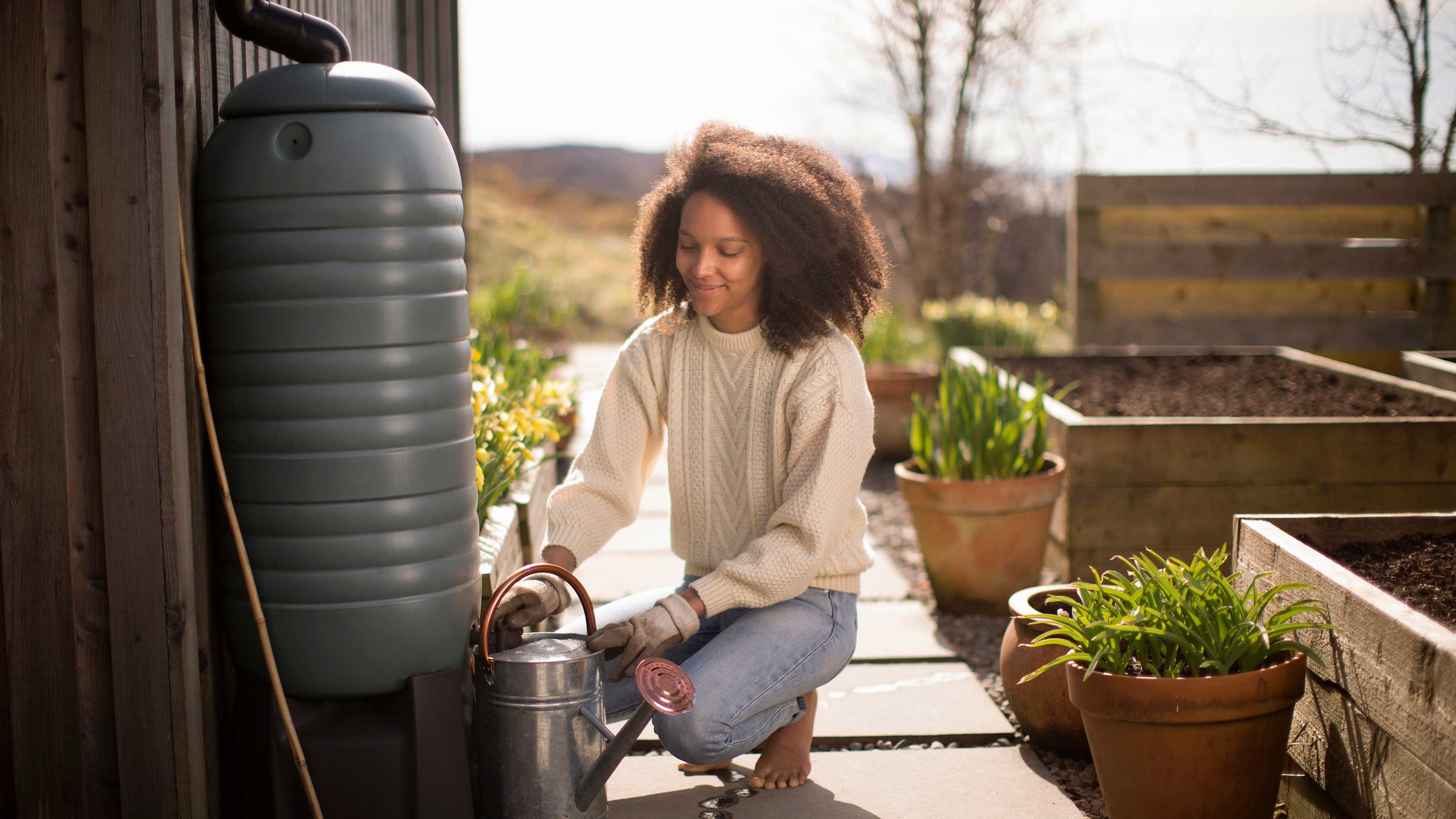
Learning how to collect rainwater in your garden is a fantastic eco-friendly way to keep your plants, flowers and vegetable crops well watered.
Conserving rainwater is totally free, plus it saves you money on your household water bill. But the benefits don't stop there: rainwater is particularly suited for your plants. Thanks to its unique pH, rainwater is much less acidic than water from the faucet, and has higher levels of nitrogen and oxygen which helps to boost growth. The tepid temperature of rainwater is also less of a shock for plant roots than hose water.
There are plenty of different methods for collecting rainwater, ranging from the quick and easy to the more labor-intensive and costly. We've put together some of the best to help inspire your own eco-friendly attitude when watering plants and crops in your backyard.
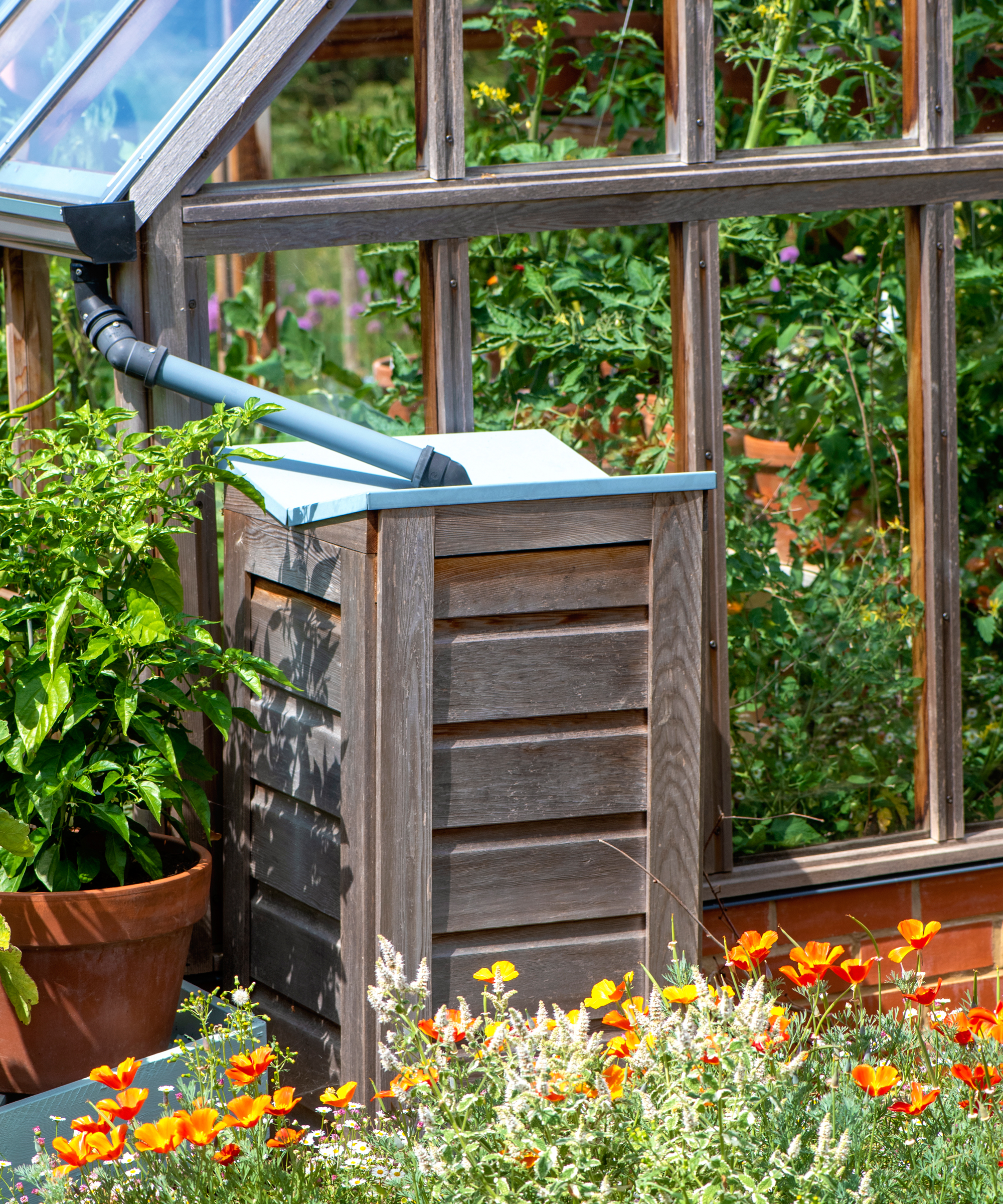
5 simple ways for how to collect rainwater for use in your garden
When gardeners think of rainwater, it's usually in terms of a free drenching in their backyard and not much else. But with a few tweaks to your pre-existing garden setup, you can retain a significant amount of your area's annual rainfall and reap the rainwater benefits for watering plants all year round.
1. Store rainwater in a rain barrel
Rain barrels, also known as water butts, are a classic DIY favorite that require little energy, forward planning or even much budget. With a rain barrel, you can easily collect water from your roof and the surrounding gutters by placing it either beneath your downspout or with a slight alteration made to your guttering or spout.
Placing a spigot at the base means you can easily access the required amount of water at the turn of a tap. Sealing a water butt helps with the prevention of leaf debris building up inside and keeps any insects out too.
Sealed rain barrels can heat up rather quickly though, especially in the hotter months, so you'll need to use the contained water regularly. Remember, the best time to water plants in the summer is either early in the morning or later in the evening when the strongest heat has dissipated.
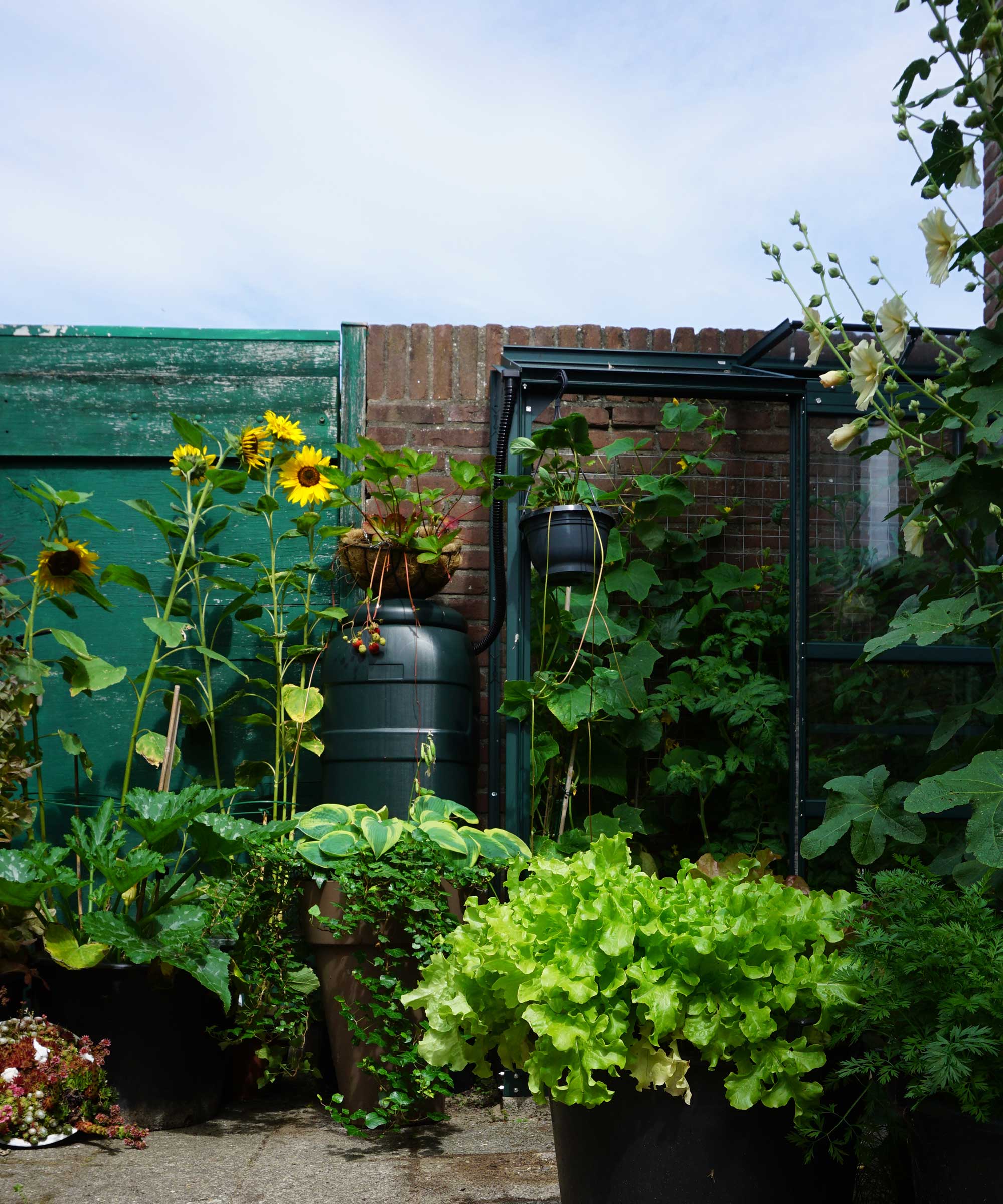
2. Direct rainwater with a decorative rain chain
A wonderfully elegant way to direct water around your garden is via a rain chain. They need a vertical water source to work most effectively, and hang best from a roof, guttering or downspout and above a collecting receptacle, usually a barrel or bucket – but you can get as imaginative as you like.
Don't underestimate how much rain comes off your roof, either: it's important to use a container big enough to collect significant amounts of water!
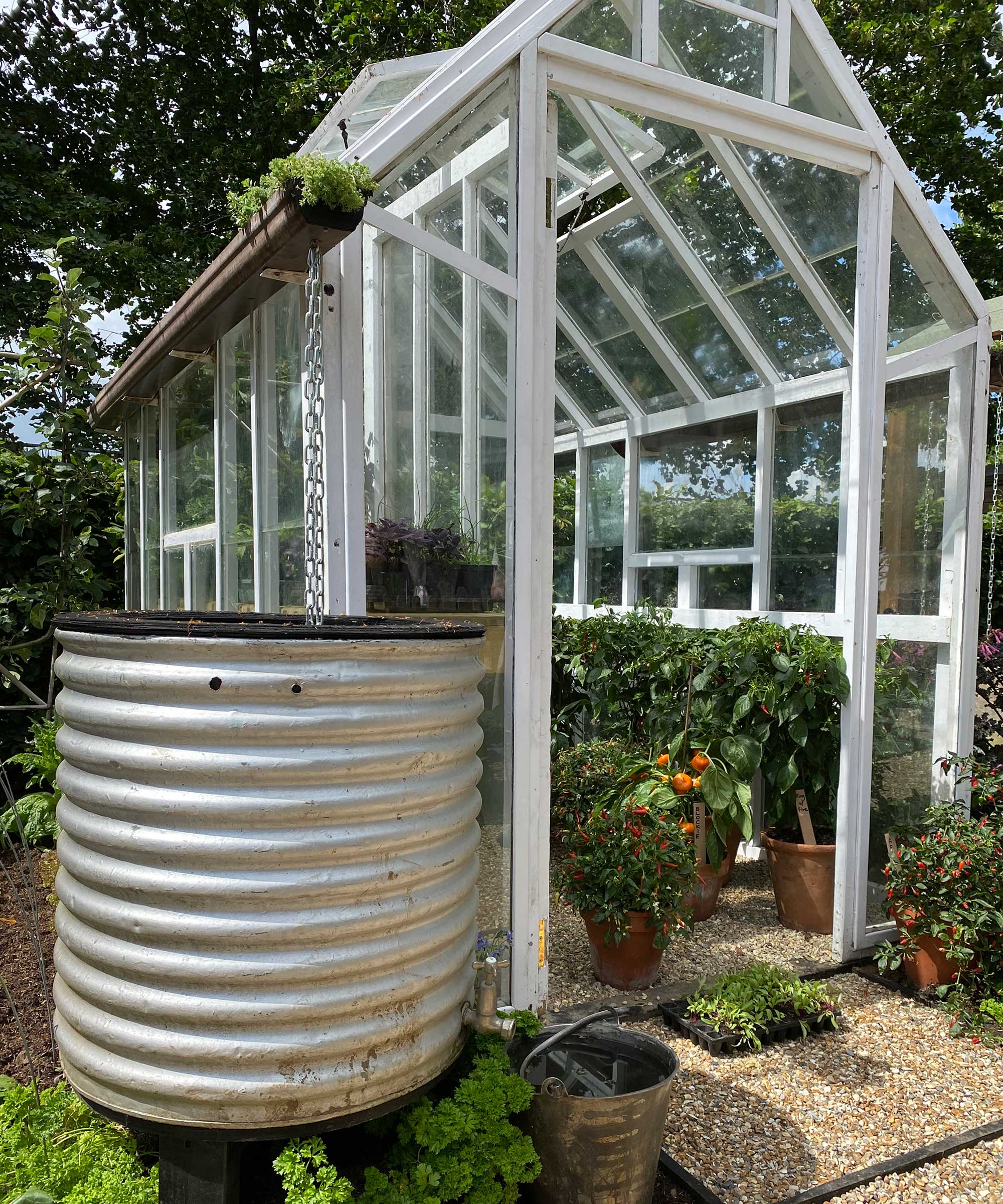
3. Incorporate rainwater into a stunning water feature
For a low-maintenance way for how to collect rainwater, consider making a feature out of your containers, like this #knollingwithdaisies garden designed by Sue Kent at the RHS Hampton Court Flower Show in 2022.
The collected water travels down a metal channel into a series of troughs which, when seen all together, make an attractive water feature. The area around it is a 'wet area': a permeable area that will absorb any splashes.
Gardeners can dip their watering cans straight into the trough and use it to water their plants, making this just as functional as it is pretty.
You could consider teaming something like this with one of the best self-watering systems so that watering plants while you're away on vacation isn't an issue.

4. Make an underground irrigation system for heavy duty watering
For a large garden or more in-depth watering, investing in a storage tank can be a fantastic idea. Installed either above or below ground, this is a heavy-duty option that allows users to retain gallons of water to irrigate crops.
Cisterns and tanks like this come in a number of different sizes. When kept underground, there's much less chance of algae growth as the conditions are dark and cool – plus it's much less conspicuous.

5. Collect rainwater in a barrel for rustic charm
If you're a fan of rustic garden ideas, you can't go wrong with using old barrels to collect and contain your rainwater. Weather-beaten wood lends a certain aesthetic that has long stood the test of time – and further exposure outdoors only adds to the overall charm.
Make sure to place your barrel at close range to the drainage pipe. If it's too low, you can prop it up with slabs of paving or old bricks.
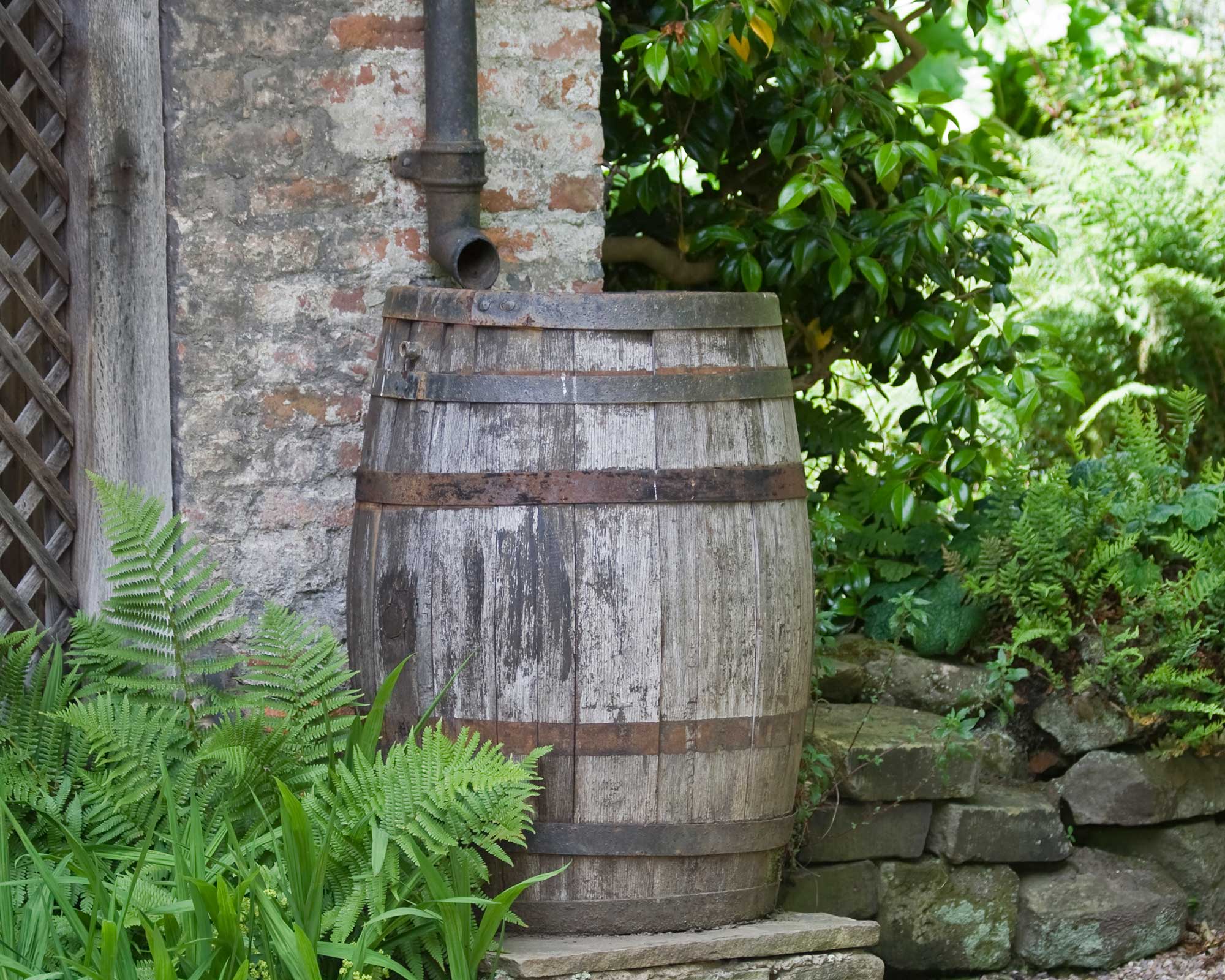
Why is it important to collect rainwater?
With droughts and hosepipe bans an expected part of each summer, it's becoming increasingly sensible to save water wherever we can.
The experts at Haws suggest tracking your water usage: 'The garden hose and garden sprinkler can use up to 1,000 litres of water per hour, so make the switch to a watering can – it will help you become more aware of how much water you’re actually using!
Some of their other garden water saving tips include, 'leaving the water you use to boil your veggies and potatoes in to cool so you can then sprinkle it over your plants. Also, pop your watering can in the shower or bath with you and let it fill up – it will save all that excess water from going down the drain.'
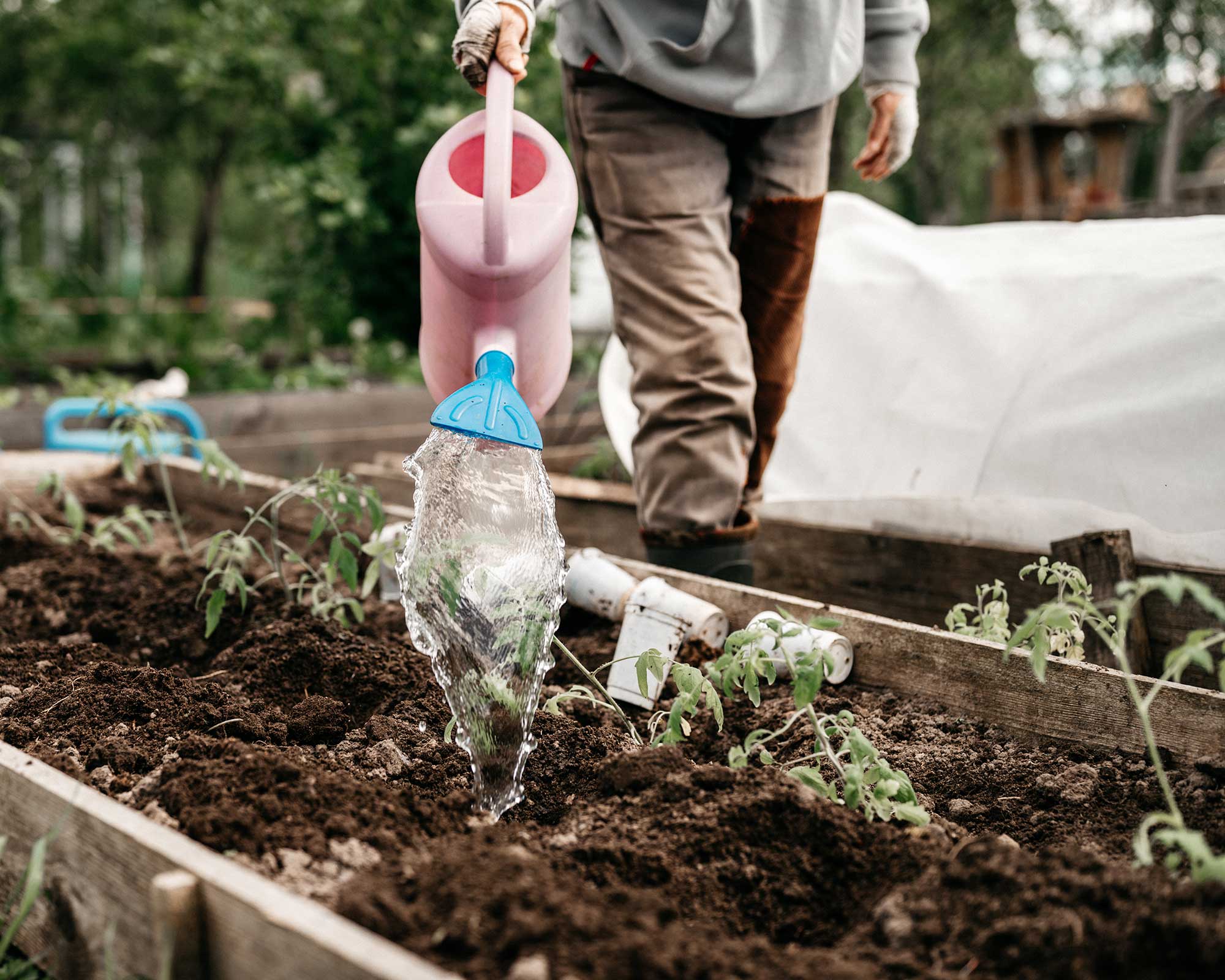
How big should a water butt be?
It can be easy to underestimate what sized water butt or rain barrel you need for collecting rainwater. Sean Lade, director of Easy Gardening Irrigation, says the mistake many folks make is not buying a large enough water butt.
'During dry spells, when you want to water the garden, you aren’t replenishing the supply of water and you are going to be using more water to keep plants happy. Over a period of just a few days during a hot dry spell, you can quickly use up all the water you have collected if you only have a small water butt.'
'My suggestion is to buy a water butt with a minimum capacity of 100 litres for terrace/small gardens, 200+ litres for small-medium sized gardens and 500+ litres for large gardens. However, the bigger the better in my opinion. Whatever you have space for.'
Tom Hilton, director of hydroponics specialists National Greenhouse agrees. Once your water butt has collected plenty of water, he tells us: 'You should then transport it to a secure container with a lid for storage to avoid contamination, and replenish your plants when they need it, especially during the warmer months.
'If you’re collecting and storing rainwater during the winter months, make sure to fill containers up by three quarters to account for freezing expansion.'
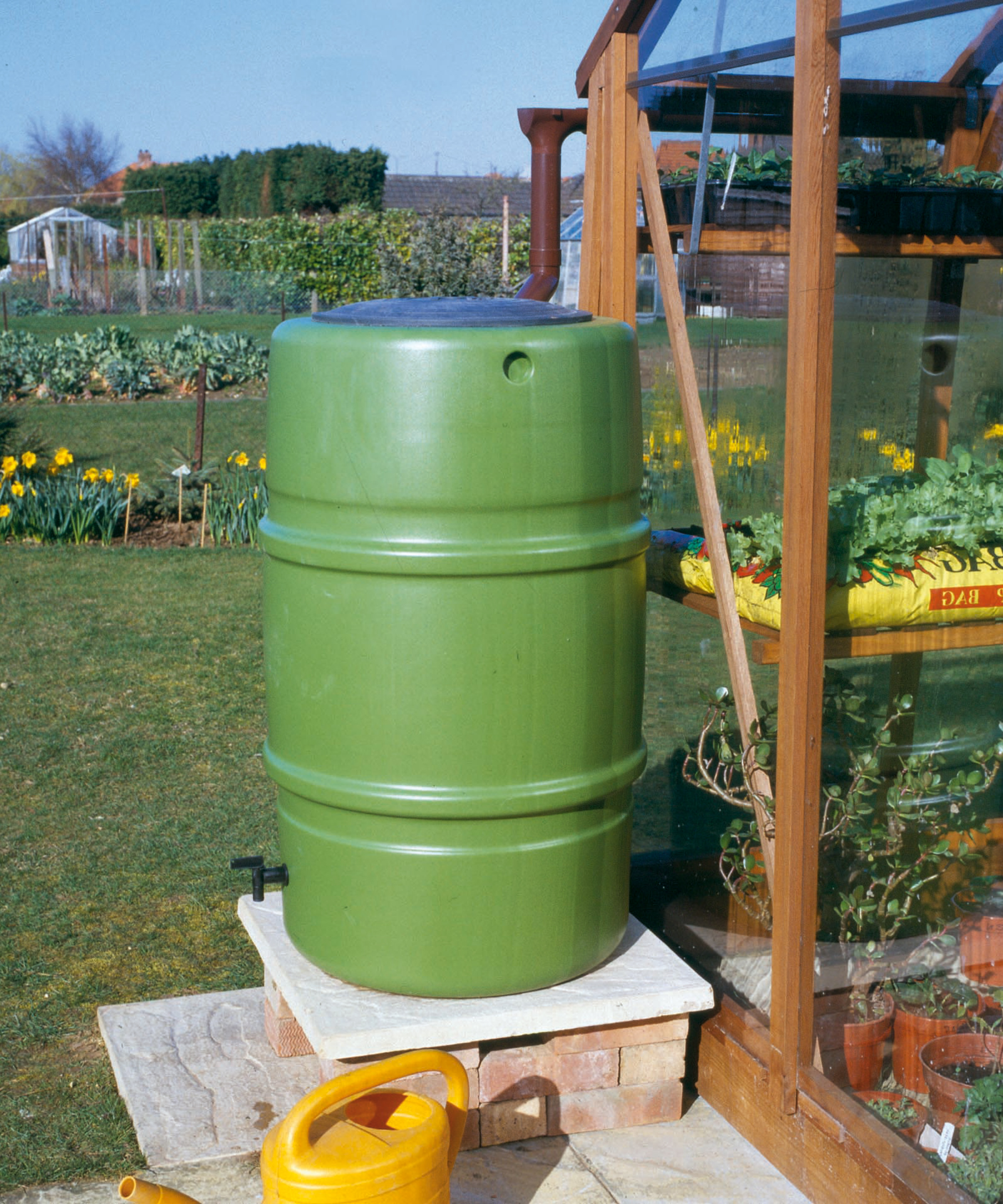
How long can water sit in a rain barrel without smelling?
Most rainfall will be collected in the winter, then stored for use on your kitchen garden, flower beds and garden planters throughout the summer – which means there's a danger of stagnant or foul-smelling water if it's left too long.
To avoid this, try to use the collected water as regularly as possible, and aim to empty it completely each month.
Keep a tight fitting lid on your water container to prevent leaves and other organic debris from getting inside, and to discourage insects from entering. This will also help delay any buildup of algae which contributes to the smell.
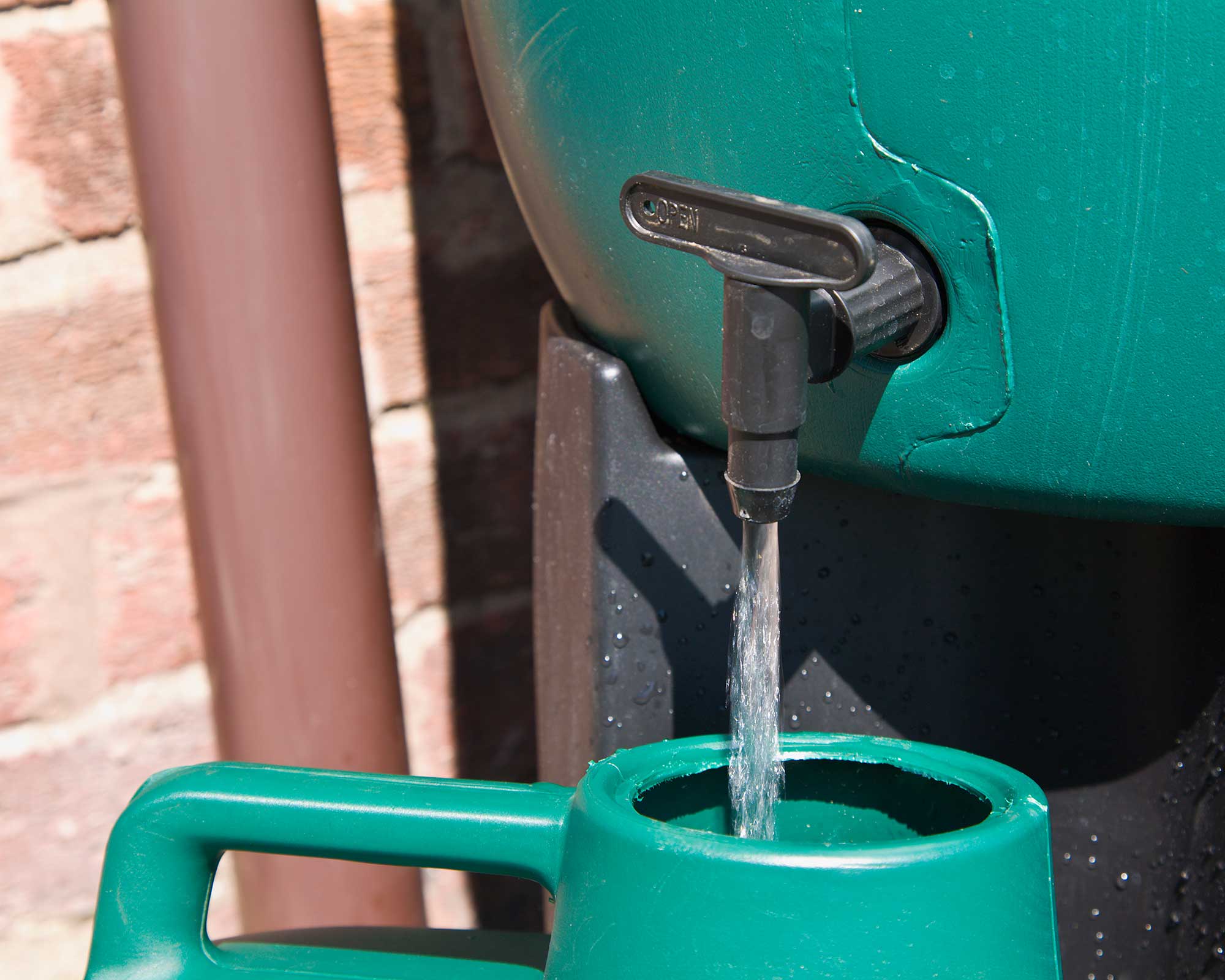

Freelance writer and author Flora Baker is a keen amateur gardener and houseplant enthusiast. Her small garden in South London is a constant work in progress as she gets to grips with snail prevention, DIY trellises and what to plant in shady spots overrun with ivy.
